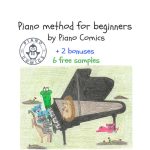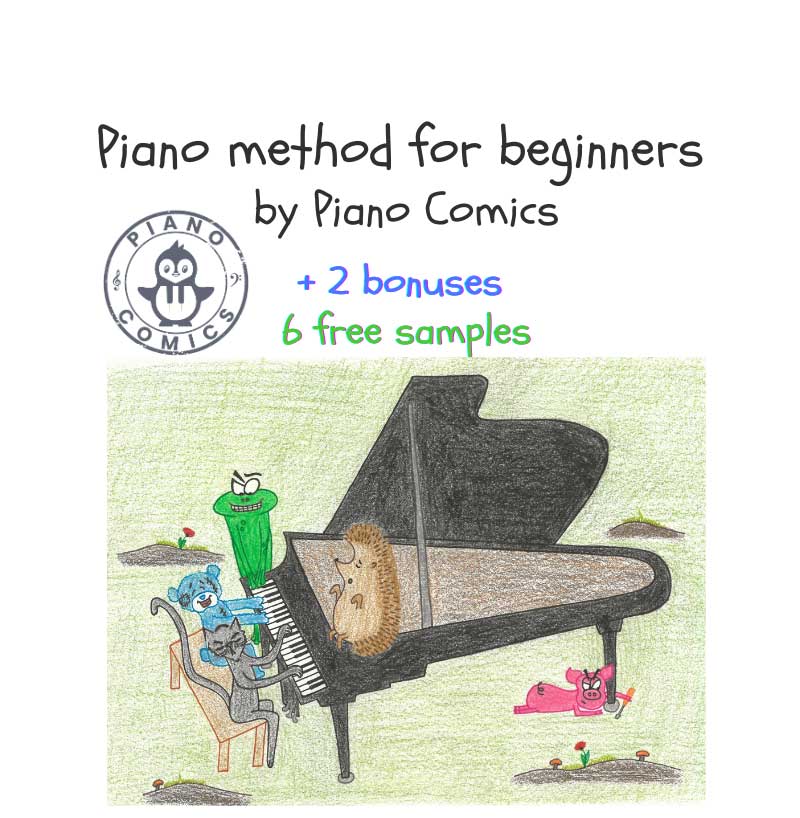Description
Piano method for beginners by Piano Comics was created for my young students with the purpose of establishing a solid music foundation in their first years of learning piano. Most importantly, to be able to understand the core essence of music elements in such a way that from an early age, students can recognise how music exists in our everyday life, environment and nature.
The basic learning tools of this method are illustrations, rhythm of speech and humour. Illustrations stimulate and enrich one’s imagination while also helping the visual learners. The rhythm of speech is a ladder that transfers the heart of music – rhythm – from our brain and into our fingers; kids may not understand rhythmical values in theory, but in reality, they apply a stable and excellent sense of rhythm through singing and/or dancing. Finally and most significantly, any knowledge obtained through humour, laughter, fun and playful teasing becomes conscious, efficient and stays long-term.
This digital material can be used to supplement any method. It is a copyrighted material, studio-licensed. It’s also suitable for musically trained parents that homeschool. The digital form gives the freedom of choosing part/s, pieces to print and teach while the scores are wide and large, making it easy for kids to read.
The method contains 54 pieces and is divided into 4 chapters, stacking up basic music principles in a simple, concise and fun way. There are 2 bonuses and 6 free samples available for download here.
The 1st chapter contains 14 pieces, plus 8 more that nurture aural skills. It introduces the use of 1st, 2nd, 3rd fingers, rhythmical values of a whole, half, quarter, trains reading treble, bass clefs while the second half of the chapter adds some dynamics and articulations ( tenuto, accent) .
The 2nd chapter contains 14 pieces, 4 simple rhythmical exercises and 2 pages dedicated to dynamics and notation on treble clef. It introduces the 4th finger while the 5th is used only in the last 2 pieces. Here, staccato articulation is added, 2 hands playing together, parallel and contrary movement.
The 3rd chapter contains 9 pieces and 4 pages dedicated to notation on bass clef, flats, sharps, changes of dynamics and chromatic motifs. Here, all 5 fingers are used, intervals are introduced and finger changes from 1-2-1, 1-3-1. In the last pieces the hands start moving to different octaves breaking the ‘one-hand position’.
The 4th chapter contains 17 pieces, plus 2 pages dedicated to tempos and their changes. Here, eighths are introduced, finger and hand position change more often, pieces are richer in alterations and articulations. 2 pieces are written in odd time signatures, two more in a canon-form, 1 trains memory and the last one, composition skills. Some of the pieces in the fourth chapter can also be used by late beginners and elementary students.
Piano method for beginners by Piano Comics does not have a time-frame. It can be completed in full or partially, as a supplement to other piano method materials in 1 to 3 school years, depending on the individual student’s needs and abilities.








Reviews
There are no reviews yet.